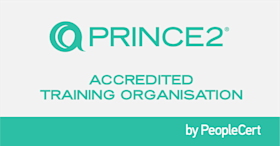» This Combined course is also available as two separate courses: Foundation and Practitioner.
Portfolio management is defined as a coordinated collection of strategic processes and decisions that together enable the most effective balance of organisational change and business as usual.
PRINCE2 Portfolio Management (also known as MoP) approaches the management of change projects and programmes from a strategic viewpoint. It provides an overview of all change activities, including what is in the portfolio, what it is costing, what organisational and implementation risks are faced, what progress is being made, and most importantly what the impact on business as usual and organisational strategic objectives is.
MoP builds on and co-ordinates existing processes such as strategic planning, investment appraisal and programme and project management to be effective and add value.
Portfolio management addresses the fundamental questions:
Are we doing the right things?
Are we doing these things right?
Most significantly, are we realising all the benefits in terms of more effective services and efficiency savings from the changes we are implementing?
MoP is based on five flexible principles which provide the foundation for successful Portfolio Management practice, in terms of:
Senior Management Commitment: Any change initiative struggles without it, so top-level support comes first in MoP’s list. Change initiatives must have public champions to communicate the value and benefits of Portfolio management. They need to use both the stick and carrot – ensuring compliance with PfM standards and personally demonstrating the behaviours essential to the success of the Portfolio. So, no ‘pet projects’ – not even the Chief Executive’s!
Governance Alignment: Without proper governance – including clarity about what decisions are made – PfM will fail. MoP provides examples and diagrams of a successful Portfolio governance structure – from Programme and Project Mangers up through the Portfolio Progress Group to the Director / Investment Committee level. Supporting these are the P3O model and, working alongside them: Business As Usual areas that will be impacted by the change. A full set of role descriptions are provided in the MoP manual as ready-to-use templates.
Strategy Alignment: Change initiatives which do not deliver benefit = waste and confusion. The ultimate objective of PfM is to achieve the strategic objectives of the organisation. MoP suggests a driver based model starting with very high level strategy, down to strategic objective then benefits and finally, change initiatives that will deliver them. It provides useful, practical, examples for the private and public sectors.
Portfolio Office: There has to be a business area which provides up to date and accurate information to allow good decision making by Portfolio Managers. This is the role of the Portfolio Office and this MoP principle is strongly linked to the OGC standard: P3O. MoP shows different P3O models including linked (but temporary) Programme and Project offices as well the permanent Portfolio office and aligned Centre of Excellence.
Energised Change Culture: The success of the Portfolio depends as much on people as process so this principle recognises the need for an engaged team working together to define and deliver the Portfolio. Here, MoP gets into the ‘softer side’ by looking at areas such as communication, the learning organisation and listening and engagement with staff.
Examination
This course pricing includes vouchers for the MoP Foundation Exam and MoP Practitioner Exam, which are online proctored exams through PeopleCert. Practice exam papers are provided in the course, and reviewed to assist in preparation.
The Foundation exam is:
40 minutes
50 multiple-choice questions
Pass mark is 25 out of 50 (i.e. 50%)
Closed book
The Practitioner exam is:
3 hours (180 minutes)
Objective testing multiple-choice questions
Pass mark is 40 out of 80 (i.e. 50%)
Open book (Portfolio Management official eBook only)
After passing the exams, each student’s certificates will be made available to them via PeopleCert.
It is highly recommended that you spend some time each evening of this course reviewing and consolidating what you’ve learned, to be well prepared for the exams.


